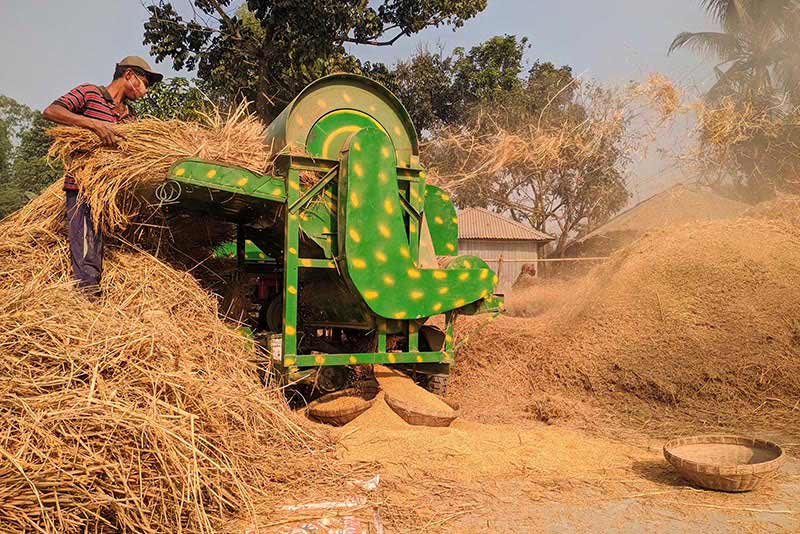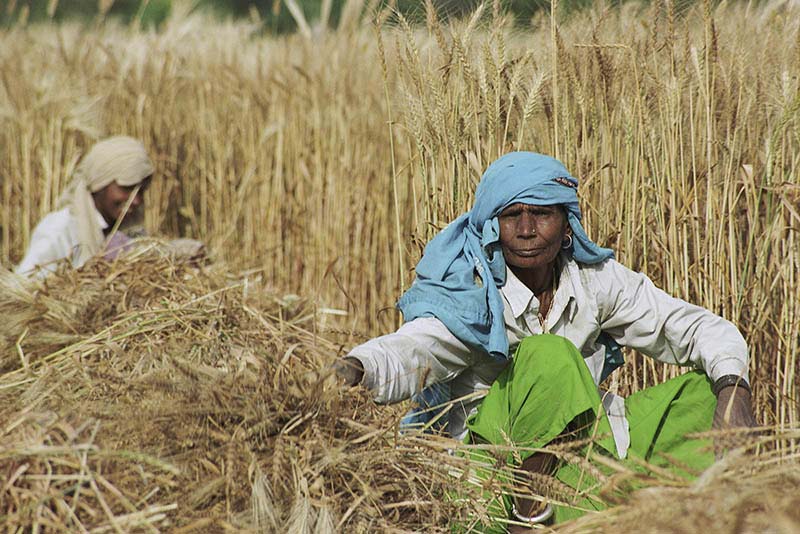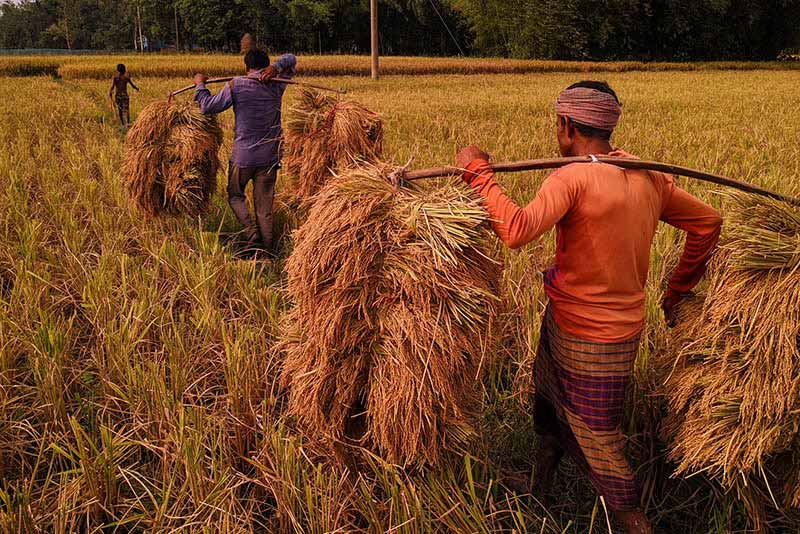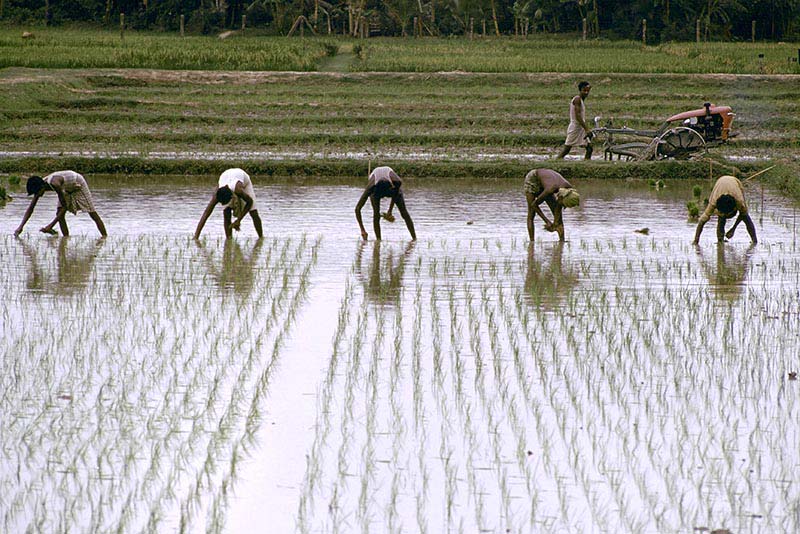By David Lawrence and Ahsan Z Khan
Bangladesh has ambitious development goals — its Perspective Plan 2021–41 calls for the nation to become an upper-middle-income country by 2031 and a developed one by 2041. Experts say that boosting investment in the country’s agribusiness sector will be critical to achieving these goals. That’s because agribusiness in Bangladesh supports about 100 million people, more than half of the country’s population of 170 million.
Agribusiness was one of the “high-growth thrust sectors” showcased at a two-day International Investment Summit held in the capital in late November. It was hosted by the Bangladesh Investment Development Authority (BIDA) and attended by over 6,000 participants from 54 countries in-person and virtually.
“Overall economic growth of the country emanates from agricultural development,” said Muhammad Abdur Razzaque, Bangladesh’s Minister for Agriculture. “Our manufacturing and service sector is expanding, but the importance of agriculture is not shrinking because it ensures food safety and provides raw materials for industries.”
Bangladesh has a lot to offer investors—a steadily growing economy, a strong, low-cost workforce, a large and growing domestic market, an improving investment climate, and investment incentives such as tax exemptions. But so far, these factors have not attracted enough foreign investment, especially during the COVID-19 pandemic.

A rice threshing machine in Bangladesh. Photo by Muhammad Ashaduzzaman/Shutterstock
According to UNCTAD’s World Investment Report 2021, foreign direct investment (FDI) in Bangladesh fell by 11 percent in 2020, to $2.6 billion, in large part because of the impacts of the pandemic. In contrast, during the same period, FDI in South Asia rose by 20 percent, primarily driven by India. Bangladesh’s government aims to reach an FDI of 3 percent of GDP in fiscal year 2025. Currently, Bangladesh attracts FDI at nearly 1 percent of GDP annually.
The potential of the country’s agribusiness sector is significant. According to BIDA, which oversees and promotes private investment, the agribusiness sector produces about 70 million metric tons of output, mainly rice, potatoes, and sugar crops. It employs about 40 percent of the workforce and accounts for approximately 14 percent of GDP. Bangladesh’s agricultural products are currently exported to more than 140 countries, accounting for 3.5 percent of exports—mainly in aquaculture products.
The World Bank Group’s Country Private Sector Diagnostic (CPSD) for Bangladesh, published earlier this year, identifies agribusiness as a sector ripe for private sector investment. The agribusiness sector has “a large, untapped potential to generate higher-value addition and exports, meet growing domestic demand for food that is more nutritious, and create jobs across the value chain,” the report said.
But significant obstacles must be addressed if the sector is to fulfill its potential and attract new investments. Experts say that the sector must develop to meet export demand and growing domestic demand for high-value-added products. From interviews and discussion at the investment summit, four areas stand out:
Agri-processing and food safety
The processed food market in Bangladesh is approximately $3.5 billion, with a domestic market of $2.8 billion. Growth is strong at 8 percent. But its agribusiness value chains are poorly developed—almost all agricultural products are sold unprocessed to the final consumer without any added value. In addition to exports, Bangladesh’s youth—70 percent of the population is under 40 years of age—offers a significant potential growth market for processed agricultural goods and high-value-added crops. They also make better use of new technologies.
Realizing this potential will require Bangladeshi firms to adopt best practices in food processing, on-farm mechanization, and better control over food safety and quality. At the summit, Abdul Kayowm Sarker, Chairman of the Bangladesh Food Safety Authority, noted that regulations and compliance in food safety were inadequate and that processors emphasized quantity over safe and quality food.
“Food processing industries have to produce products as per clients’ requirements, and most developed countries require safe and quality food,” said Sarker. He also said that the country needs a “science-based, modern, preventative approach” to ensure food safety.
Bangladesh has made progress with food safety reforms, opening doors to export markets in Europe, India, the Middle East, and North America. But more needs to be done to scale up these successes, experts said. For example, stronger regulations that are harmonized with international standards, better testing and certification facilities, and a fully accredited, in-country laboratory could improve the quality and safety of Bangladesh’s agricultural products and open doors to new markets. Local consumers would also benefit from having access to safer and healthier food.

Farmers in Bangladesh. Photo by: Scott Wallace/World Bank
Agri-logistics
Improving agri-logistics—from harvesting to storage to transportation—could stem high food losses and modernize the agricultural sector. Post-harvest losses are about 30 percent in Bangladesh. There is a massive need to improve cold-chain logistics and storage facilities at the farm level.
The business case is clear. Some agribusinesses in Bangladesh are starting to see the value of investing in cold storage capacity. The NAAFCO Group, for example, imports, formulates, markets, and distributes fertilizers, pesticides, seeds, and animal health and nutrition products throughout the country. NAAFCO is looking to improve its efficiency throughout its supply chain.
“Currently, we spend about one crore Taka (about $117,000) a year on storing the hybrid rice seeds we grow, and that’s going to increase,” said Shammi Huda, the chairman of NAAFCO. “So we are setting up cold chain facilities for seeds and vegetables ourselves. Also, farmers who use our fertilizers and pesticides have superior produce in terms of weight, size, color, look, shelf-life, and handling.”
Policies and incentives could encourage private investment in transportation infrastructure, warehouses, cold storage sites, and regional market hubs. This could help Bangladesh expand agricultural exports in fruit, vegetables, packaged foods, and beverages.
Huda added that by selling to NAAFCO, “farmers invest in better nutrition and better quality products...they sell for a higher price and sell first in the market instead of spending hours waiting for a buyer.”
That is a big win for small farmers, who are key players in the supply chain. Their income and capacity are tied directly to overall improvements in the agribusiness sector in Bangladesh.
Aggregating small farmers into larger groups
Smallholder farms dominate agriculture in Bangladesh. Agricultural land is fragmented, making it difficult for farmers to realize economies of scale for inputs, access finance or extension services, or find markets. Encouraging land agglomeration and more efficient land rental markets is one approach to addressing this challenge but requires a long-term view and significant investments.
Some private firms are looking into creative ways of aggregating small farmers so that they realize the benefits of scale. One of the first private firms to enter this space is iFarmer, a firm that uses technology to address the obstacles faced by smallholders. Launched in early 2019, iFarmer links farmers to sources of finance, provides agricultural inputs, aggregates agricultural produce, and connects farmers to markets.

Smallholders dominate farming in Bangladesh. Photo by Muhammad Ashaduzzaman/Shutterstock
“There are about 16.5 million farmers in the country,” said Fahad Ifaz, founder and CEO of iFarmer. “Almost 70 to 80 percent of them are unbanked, so they have to rely on loan sharks or microfinance, where the cost of financing is pretty high. And because of this lack of financing, these farmers are not investing properly in their farms, which means they don’t buy the best quality of agriculture inputs. They don’t always have access to extension services to get advice or training and often have to rely on local traders, and there are four or five layers of middlemen between farmers and the consumers.”
Today, iFarmer manages a network of 46,000 farmers and has facilitated over $10 million in financing.
Climate-smart agriculture
Bangladesh and its agribusiness sector are extremely vulnerable to climate change, which has led to higher temperatures, rising sea levels (and salinization), and extreme weather events that damage crops and livestock. According to the World Bank Group private sector diagnostic report, the Bangladesh Planning Commission estimates that the country’s farmland could shrink by 6.5 percent—and by 18 percent in the south—due to climate change. By 2050, climate change could lead to the loss of one-third of the country’s agricultural GDP. Further growth of the sector will require greater uptake of climate-smart agriculture practices, such as using seeds that are resilient to salinity or introducing drip irrigation.
Despite these challenges, Bangladesh is making excellent progress toward its development goals. Last month, the United Nations announced that the country is on track to “graduate” from least-developed country status to a developing one in 2026. Agribusiness contributes to achieving this goal, but there is a significant need to modernize the sector.

Rice fields in Bangladesh. Photo by: Thomas Sennett/World Bank
At the summit, Nuzhat Anwar, IFC’s Acting Country Manager for Bangladesh, Bhutan, and Nepal, noted that Bangladesh has been a success story—in large part because of sensible policy choices—and that more needs to be done now to achieve its development goals.
“At this stage, Bangladesh has reached its limit on its development model,“ she said. “Now we need a new strategy—new financing techniques, new sectors, new policies, to be globally competitive and relevant in the market.”
Published in December 2021
